|
Bush today called for $145 billion worth
of tax incentives for business investment and quick tax relief for
indiviiduals. Bush just loves tax cuts for the
wealthy, doesn't he? Bush is using the recession to push his solution
for everything economic. But is it enough? Will it be
spent? Will the Democrats go along with it? Will there be
new business investment if
confidence is so low? Will it end up just being a tax break mainly for business
investment
already planned? On the individual side, will it go
primarily to the wealthy, who spend much lower percentage of
their income.
Bush's proposals totally fail to address UNDER-CONSUMPTION as a primary cause for
the recession.
The poor have very little to spend and the dwindling middle class are
fully tapped out. Many have exhausted their
credit cards. A tax credit of $300 will be quick fix, but be of very
liitle long-term help to them, if they can't make their
morgage payments and are paying hundreds of dollars more a month for
gas.
The problem as I see it is that the rich have most of the money in the US. The wealthiest
one per cent of
the population owns more than the bottom 95 per cent. The rich
don't need tax cuts and won't spend the tax rebates.
Whether measured in terms of annual income, percentage of financial assets
owned, or the earnings of corporate executives compared to ordinary workers, the
incontrovertible evidence shows that more and more economic resources are controlled by
fewer and fewer people. One study revealed that the percentage of total household wealth held by the top one
percent of families grew from twenty percent in 1976 to over forty percent in 1997 (p.
123). Another report found that ninety percent of the top quintile's increase in wealth accrued to just the
top one percent (p. xiii).
n 1999, for example, "'the richest 2.7 million Americans, the top 1 per cent, will
have as many after-tax dollars to spend as the bottom 100 million'" (p. 103)
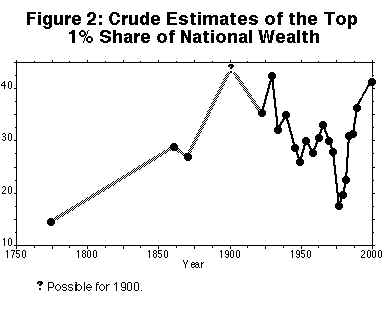 class distinctions.
class distinctions.
http://www.j-bradford-delong.net/Econ_Articles/billionaires.html
1. Cost of living is typically the same for everyone. In a free market
economy, factors contributing to the cost of living will adjust so that poorest members of
the society are forced to spend all their income on bare necessities (food, housing,
medicine), whereas richer members will have enough excess income that they can save and
invest.
2. The process by which corporate officers are paid large salaries and
bonuses, the total compensation sometimes being as much as thirty thousand times as much
as that of their lower-paid employees. (Disconnect between a) officer performance and
compensation, and b) officer compensation and worker compensation, and that officers are
compensated at levels disproportionate to either performance or payroll because they are
already part of the elite, and that this is a self-perpetuating methodology to maintain an
elite class (see neofeudalism).
Phillips shows how the economic concentration that
corrupts the political process came about--namely, through exploiting public policies for
private gain. As he states with unflinching clarity: "Laissez-faire is a pretense.
Government power and preferment have been used by the rich, not shunned" (p. xiv).
WEALTH AND
DEMOCRACY: A POLITICAL HISTORY
OF THE AMERICAN RICH. By Kevin Phillips. New York: Broadway Books. 2002. Pp. xxii, 473.
$29.95.
3. If the economy of any country is organized in the interests of the
super-rich, or is a plutocracy
in which only the wealthy can hold government office, it should be expected that wealth
condensation will follow. Some critics contend a modern example of this is the current
executive of the U.S. In the
view of some critics (e.g. Paul Krugman) the tax policies of the Bush administration vastly favor the wealthy over the poor and
the middle class. The argument underlying this is that progressive
tax systems are being scrapped in favor of regressive tax
systems, driving wealth condensation (by allowing the wealthy to retain more of their
wealth as disposable and investable income.)
Millionaires
in Senate. http://www.wsws.org/articles/2003/jul2003/sen-j07.shtml
4..Illegal immingration of Poor Mexican lowering wage of poor American
workers.
5. Outsourcing and Export of Jobs overseas.
6. Bail outs and Subsidies. Dependence on govt largesse.
Firget rugged individualism or a merit-based culture.
7. after-tax income during 1977-1994 actually declined for the
lower three quintiles and increased by only four percent for the next-to-the-highest
quintile (p. 137). The real growth was at the top
8. Inheritance Tax
9. middle-class families have maintained their levels of economic
well-being only by "sen[ding] new waves of women into the labor markets" (p.
113). As a result, the United States now has "the world's highest ratio of two-income
households, with its hidden, de facto tax on time and families" (p. 113). Further
comparisons with other Western industrialized countries make the United States look even
worse: "[T]he typical American worked 350 hours more per year than the typical
European, the equivalent of nine work weeks" (p. 113). And for what? American wage
earners have "less pension and health coverage as well as ... the Industrial West's
least amount of vacation time, shortest maternity leaves, and shortest average notice of
termination" (p. 113; emphasis added).
10. Shredded social safety net . Almost half of American workers have no
pension coverage beyond Social Security. U.S. employers have
increasingly reduced their funding of employees' retirement,
11. The situation with health-care coverage is even worse. Phillips points
out that "only 26 percent of employees in the bottom 10 percent had health insurance
provided by their companies" (p. 133). Indeed, eighty-four percent of Americans
without health insurance are in families with at least one employed person (6)--a
situation with no counterpart in any other industrialized democracy.
http://goliath.ecnext.com/coms2/gi_0199-650249/Wealth-and-Democracy-A-Political.html
12. Cost of education.
13. Glorifiaction of wealth. Cnspicuous consunpotion.
On the eve of the American Revolution, the United States-to-be had been a relatively
egalitarian society. The richest one percent of households owned perhaps fifteen percent
of the total wealth in
the economy&emdash;a very low value for such an inequality statistic. Even by the
immediae aftermath of the Civil War wealth was still not that
concentrated: the top one percent of households appear to have had a little more than a
quarter of the wealth
of the country.
By 1900, however, the U.S.
had become the Gilded Age country of industrial princes and immigrants living in tenements
of our political memory. On the one hand, Andrew Carnegie building the largest mansion in
Newport, Rhode Island with gold water faucets. On the other hand, 146 largely-immigrant
workers dying in the 1911 Triangle Shirtwaist Factory fire in Manhattan because the exits
had been locked to keep workers from taking fabric out of the building for their own
clothes.
Surveys suggest that in 1929 the richest one percent of U.S. households held
something like 45 percent of national wealth, and that the concentration of wealth had been sharply
rising in the 1920s. We strongly suspect that World War I had seen substantial
deconcentration, as infiation eroded the value of bondholders' wealth and as high demand
for labor boosted workers' earnings. It is my guess that the second was stronger than the
first; that the concentration
of wealth was eroded
more during World War I than it was boosted in the 1920s, and that the concentration of wealth in the United
States peaked sometime in the twenty years before World War I, with the richest one
percent of households owning some 50% or so of total national wealth.
The distribution of income and wealth in the slaveholding
south had always been extraordinarily unequal: how could it be otherwise when one-third of
the population are held as chattels? But the distribution of income and wealth in the south did
not become much more equal after the Civil War. Blacks remained extraordinarily
impoverished relative to whites. And even southern whites were poor relative to northern
city dwellers or midwestern farmers.
World War I saw a sharp but short-lived compression of the income distribution. Wages
became much more equal in the space of a few short years. But this compression was quickly
undone in the 1920's, which saw "very unbalanced technological progress, with
productivity advancing faster in automobilesconsumer appliances, petrochemicals, and
electric utilities" then elsewhere in the economy. These sectors were skill-intensive
sectors. Relative skilled workers, both white collar and blue collar, once again captured
the lion's share of the increased incomes made possible by technological change. The
property income share also rose somewhat in the 1920's. It is uncertain whether relatively
poor and unskilled blue collar workers experienced any rise in their wages adjusted for
infiation between 1920 and 1929.
The Great Depression, World War II, and the immediate post-World War II period saw a
substantial levelling of the income distribution. Skilled urban workers earned ninety
percent more than unskilled workers before the Great Depression; they earned some sixty
percent more after World War II. Skilled manufacturing workers earned close to double what
unskilled workers earned before the Great Depression; they earned only forty percent more
after World War II. Similar patterns can be found in the share of income going to property
rather than to labor: it, too, dropped by a third&emdash;from thirty percent to twenty
percent of total national product&emdash;between the 1920's and the 1950's.
World War I saw a sharp but short-lived compression of the income distribution. Wages
became much more equal in the space of a few short years. But this compression was quickly
undone in the 1920's, which saw "very unbalanced technological progress, with
productivity advancing faster in automobilesconsumer appliances, petrochemicals, and
electric utilities" then elsewhere in the economy. These sectors were skill-intensive
sectors. Relative skilled workers, both white collar and blue collar, once again captured
the lion's share of the increased incomes made possible by technological change. The
property income share also rose somewhat in the 1920's. It is uncertain whether relatively
poor and unskilled blue collar workers experienced any rise in their wages adjusted for
infiation between 1920 and 1929.
The Great Depression, World War II, and the immediate post-World War II period saw a
substantial levelling of the income distribution. Skilled urban workers earned ninety
percent more than unskilled workers before the Great Depression; they earned some sixty
percent more after World War II. Skilled manufacturing workers earned close to double what
unskilled workers earned before the Great Depression; they earned only forty percent more
after World War II. Similar patterns can be found in the share of income going to property
rather than to labor: it, too, dropped by a third&emdash;from thirty percent to twenty
percent of total national product&emdash;between the 1920's and the 1950's.
The very rich need to be heavily taxed. If it hurts the
stock market for a while, so be it. The infrastructure
of America has too long been neglected. There are lots of
worthy public works programs that could be started.
Bridges are collapsing. Roads are caving in. But taxation
policies have too long allowed the very rich to make
more money than they can ever use.
Top US Marginal Income Tax Rates, 1913--2003
Married Couples, Filing Jointly
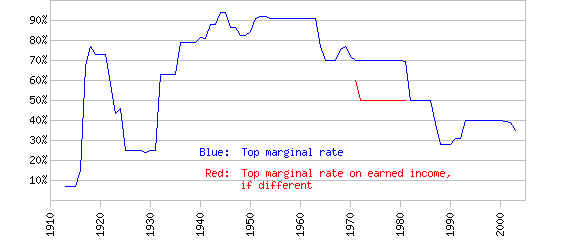
Economic Boosts for A Sagging Economy.
Tax-cut monomania
The striking thing to me is how little the US's tax code changes income inequality in the
US. Yes, the US tax code is progressive, so that disposable income after taxes is a bit
less unequal than it was before taxes... but the progressivity of the US tax code is quite
modest compared to other developed countries.
-----
The striking thing to me is how little the US's
tax code changes income inequality in the US. Yes, the US tax code is progressive, so that
disposable income after taxes is a bit less unequal than it was before taxes... but the
progressivity of the US tax code is quite modest compared to other developed countries.
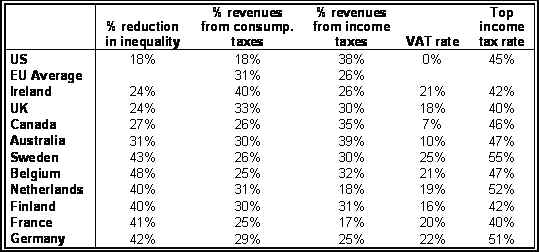
http://angrybear.blogspot.com/2006/03/tax-progressivity-and-income_31.html
Gilded Once More
Many middle class families are one earner away from poverty.
As for the uninsured, their ranks grew in 2005 by 1.3 million people, to a record 46.6
million, or 15.9 percent.
greatest movement toward inequality occurred in the 1980s during the Reagan
administration,
For the other 91 million households, the median dropped, by half a percent, or $275.
Incomes for the under-65 crowd were hurt by a decline in wages and salaries among
full-time working men for the second year in a row, and among full-time working women for
the third straight year. In all, median income for the under-65 group was $2,000 lower in
2005 than in 2001, when the last recession bottomed out.
Despite the Bush-era expansion, the number of Americans living in poverty in 2005
— 37 million — was the same as in 2004. This is the first time the number has
not risen since 2000. But the share of the population now in poverty — 12.6 percent
— is still higher than at the trough of the last recession, when it was 11.7 percent.
2001 set in motion a complete phaseout of the estate tax. If the Bush administration
hadn’t been too clever by half, hiding the true cost of its tax cuts by making the
whole package expire at the end of 2010, we’d be well on our way toward becoming a
dynastic society.
Taxation has become much less progressive: according to estimates by the economists
Thomas Piketty and Emmanuel Saez, average tax rates on the richest 0.01 percent of
Americans have been cut in half since 1970, while taxes on the middle class have risen. In
particular, the unearned income of the wealthy — dividends and capital gains —
is now taxed at a lower rate than the earned income of most middle-class families.
Income inequality — which began rising at the same time that modern conservatism
began gaining political power — is now fully back to Gilded Age levels.
Last year, according to Institutional Investor’s Alpha magazine, James Simons, a
hedge fund manager, took home $1.7 billion, more than 38,000 times the average income. Two
other hedge fund managers also made more than $1 billion, and the top 25 combined made $14
billion. How much is $14 billion? It’s more than it would cost to provide
health care for a year to eight million children — the number of children in America
who, unlike children in any other advanced country, don’t have health insurance.
n the last quarter of a century when the United States moved from global power to
global behemoth, a quarter of a century in which American corporations reaped huge profits
while spreading their power and influence all over the globe, American workers made no
gains. None. The wages of American workers have, since 1978, been flat or declining.
lack of progressivity in the US tax structure is striking, and in my opinion,
disgraceful. For those who think something needs to be done to ameliorate the US's income
inequality problem, making the tax code more progressive should clearly be one of the
first lines of policy attack. There's a tremendous amount of room for improvement there.
All developed countries collect more - usually far more - of their tax revenue through
consumption taxes than does the US. Yet their tax codes are far more progressive. And
surprisingly, other countries do not create that tax code progressivity by simply levying
high marginal income tax rates on the rich; in general, their top rate is on par with that
of the US. Instead, they generate progressivity in the tax code through generous
low-income tax exemptions or credits, and top marginal tax rates that kick in at much
lower levels of income than in the US.
-------------------------------------------------------------------------------------------------------
Medicare, Medicaid,
education,
child care and other vital programs, from
transportation to
health care,
the environment to
science research
"Trickle-down economics"
and "trickle-down theory," is a term used in political rhetoric to classify
economic policies that are perceived to primarily benefit the wealthy. The theory holds
that economic gains by the wealthy are spent by investment or purchases that result in
jobs for middle and lower class individuals.
The economist John
Kenneth Galbraith noted that "trickle-down economics" had been tried before
in the United States in the 1890s under the name "horse and sparrow theory":
"if you feed enough oats to the horse, some will pass through to feed the
sparrows." Galbraith claimed that the horse and sparrow theory was partly to blame
for the Panic
of 1896.[10]
Keynesians generally argue for broad fiscal
policies that are direct across the entire economy, not towards one specific group
Bush calls for $145 billion worth of tax incentives
for business investment and quick tax relief for
indiviiduals.
Source: http://www.alternet.org/workplace/62118/
Will
there be new business investment
if confidence is low? Will it end up being a tax
break mainly for business investment already
planned? On the individual side, will it give the
wealthy who will get the tax rebates any real
incentive to spend the money.
It
fails to address UNDER-CONSUMPTION
as a primary cause for the recession. Those who
get the money are not apt to spend it. An
immediate spending boost is needed.
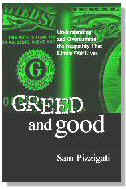
"
|
A Prescription
for Middle Class Happiness
An important new book, from an eminent Ivy League economist,
sees brighter skies ahead for average Americans — if we get serious about confronting
excess at the top of America's income ladder
A Too Much review of
Falling Behind: How Rising Inequality Harms the Middle Class
By Robert H. Frank
University of California Press,
2007
By Sam Pizzigati
June 11, 2007
Should average Americans really worry about all those millions
pouring into corporate executive pockets?
“D.” Taylor, the top official at Nevada’s biggest
union, doesn’t particularly think so. He’s too busy bargaining middle class
wages for 60,000 hotel workers to spend much time fretting about the massive sums now
concentrating at the top of America’s economic ladder.
“We really don't care what the people in the executive branch
make,” Taylor last month told a reporter asking about CEO pay, “just as long as
our members and their families can share in the wealth and have decent pay and job
security.” |
all of them are also pledging to scale back the lavish tax cuts that George W. Bush
has bestowed upon our nation’s wealthiest. They’re eager, as Clinton puts it, to
“hit the restart button on the 21st century.”
In other words, as Frank puts it, we care about “relative consumption in
some domains more than others.” We care so much more that we’ll spend our time
and money on activities that enhance our comparative position at the expense of activities
that don’t.
Economist Robert H. Frank would beg to differ. To build a United
States where average Americans can live truly secure, satisfying lives, Frank advises in
his newly published Falling Behind: How Rising Inequality Harms the Middle Class,
fewer dollars — far fewer dollars — need to be pouring into rich people’s
pockets.
Frank’s perspective, in our contemporary political clime, smacks
of “class war.” But Bob Frank makes for an unlikely class warrior. He teaches at
Cornell University, in a top-notch Ivy League business school. He writes regularly for the
New York Times. He does textbooks. His Principles of Economics may soon
become an Econ 101 standard.
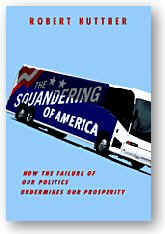
"I believe,” Kuttner writes, “that the American economy is in danger not
just of increasing economic and financial inequality. It is at risk of a 1929-scale
catastrophe.”
“In the mass deprivation of the 1930s,” he adds, “demagogues
and dictators abounded. It was a miracle that the Depression delivered Franklin Roosevelt
and an energizing of American popular institutions, rather than a home-grown Adolf Hitler.”
In other words, as Frank puts it, we care about “relative consumption in
some domains more than others.” We care so much more that we’ll spend our time
and money on activities that enhance our comparative position at the expense of activities
that don’t.
references:
http://72.14.253.104/search?q=cache:fQR7gOAqE0AJ:www.cipa-apex.org/toomuch/goodreads.html+concentration+of+wealth+US+history&hl=en&ct=clnk&cd=53&gl=us&client=firefox-a
|

 class distinctions.
class distinctions. 



